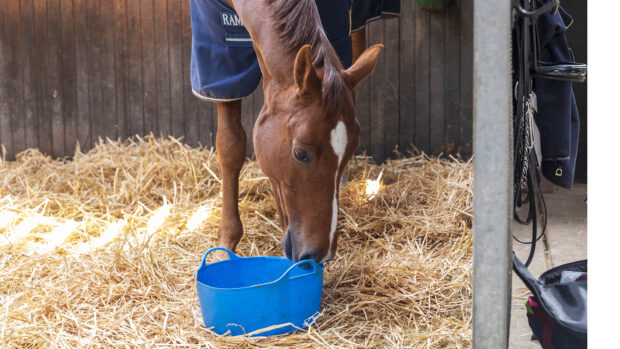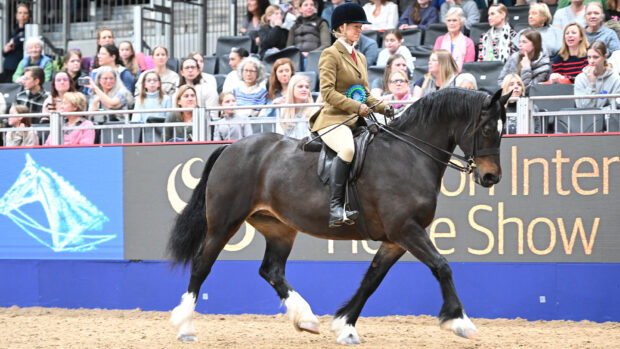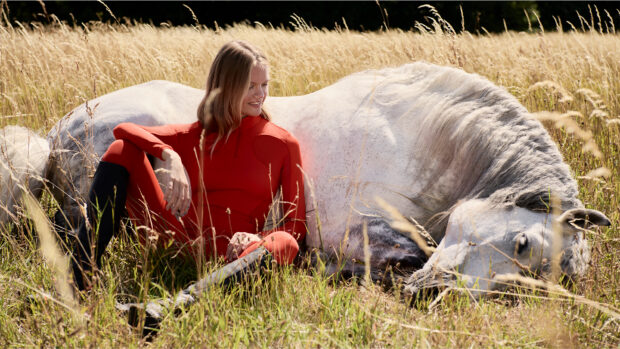There are three varieties of German Pointer: wirehaired, shorthaired and longhaired. According to the UK Kennel Club, they are three different breeds, each with their own unique characteristics and traits. This is in contrast to other breeds, such as the Weimaraner, which can be either long or shorthaired within the one breed. Common to all pointer breeds is their ability to hunt, point and retrieve (HPR), gaining their name from their technique of pointing to the quarry it has tracked down to show the hunter its location. They excel as working gundogs on both land and in water.

The wirehaired pointer is a rugged working dog whose coat protects him well against the elements and harsh conditions
The German Shorthaired Pointer (GSP) is a superb all-round gundog, while the German Wirehaired Pointer (GWP) comes into its own particularly in challenging conditions, thanks to that wiry coat protecting it from inclement weather and prickly undergrowth. These two are broadly similar in terms of general physique and appear closely related bar the length and texture of their coats, whereas the German Longhaired Pointer (GLP) has noticeably different heritage. It is a lighter build, with more setter-like qualities – owners are often asked if it is some sort of brown Irish Setter. Having only been around in the UK for the past 30 years, the GLP is not as well-known as the short and wirehaired breeds in this country, but like their cousins, they share the ability to work all day long.
In its native country of Germany, the wirehair is the most popular – the third most popular of all breeds – while in the UK, the shorthair reigns supreme. In its homeland, the longhair is seen as a specialist bird dog, while the short and wirehair are all-rounders, used for all sorts of game.

The longhaired breed is sometimes confused for a setter
German Pointer breed: factfile
Kennel Club breed group: gundog
Size: medium to large
Daily exercise: more than two hours a day.
Coat: short (GSP) or medium (GWP and GLP), shedding
Colours: the GSP can be black and white, liver and white – all with spotting or ticking – or solid black or liver. The GWP is the same, but without the spotting.
The GLP is brown, brown and white, dark brown roan, trout-coloured roan or white ticked.
Lifespan: more than 10 years.
Bark: moderate barkers, but they do have a tendency to whine.
History: each of the three breeds have different histories and bloodlines, but also general themes in common. Back in the days of 17th century Teutonic hunters, the mix of dense forests and open fields of Germany – filled with all types of game from grouse and rabbits to wolves and boar – required a hunting dog that could work on any terrain and track all types of game. Plus, they wanted a hunting dog who could be a protective companion in the home. This is the basis for the modern German pointer breeds. It is thought that they have their roots in several European hunting dogs, including the Spanish Pointer and German bird-dogs, while it’s possible that there is also some bloodhound in their heritage, too.
GSP history: established in Germany in the 1870s, after this native breed had been further refined with some English Pointer blood for an injection of speed. It took time to become established in the UK, however, gaining Kennel Club recognition in the 1950s. It has since become the most popular German Pointer breed in this country.
GWP history: dating as a distinct breed from the turn of the century in Germany, descending from German rough and smooth-haired pointers, poodles and griffons. The wirehaired has now forked into two further distinct breeds in Germany and the US – the Drahthaar (which means wirehair) and the German Wirehaired – they are not exactly the same! They have slight differences in coat colour, breed standards and even style of hunting. The UK version GWP was established in the 1970s and holds no distinction between working and show dogs.
GLP history: from the same root stock as the other German Pointer breeds, but likely to include more spaniel and setter blood. The first GLP was imported into the UK only in the mid 1990s, but has been established in its homeland since 1876.
Distinctive features: the GSP is sleek; the GWP rugged and bristly; and the GLP has a longer, wavy coat.
The pointing technique is common to all three, as well as a graceful, athletic and noble physique.
Temperament: keen to work, with dogged perseverance. Alert, biddable and loyal.
Things to consider: while the GSP is sleek and smooth, the GLP and GWP will require more frequent grooming with a good dog brush.
A fairly large breed, they may benefit from a large dog bed to give them space to stretch out and rest from the vigorous exercise they love.
Due to their high prey drive and boundless stamina, you’ll need a good whistle and to have well-established recall.
Training: an intelligent breed that will flourish with consistent training. They definitely need a job to do to channel this energy, and can become over-exuberant if left to their own devices. They need an experienced handler as they can be challenging when they are young and while training is being established, thanks to their high energy levels and extremely strong prey drive.
Work on establishing recall, and if you are not planning to work your pointer, then games such as fetch and retrieve will channel his energy.

Complete Guide To German Shorthaired Pointers
This book uncludes practical tips, tricks, and insights to help a new or seasoned German Shorthaired Pointer owner.

Did you know: a hound is a dog, but not all dogs are hounds

Who’s a clever dog? The 7 smartest dog breeds in the world

All about the Hungarian Vizsla

All about the English springer spaniel

Subscribe to Horse & Hound magazine today – and enjoy unlimited website access all year round
Horse & Hound magazine, out every Thursday, is packed with all the latest news and reports, as well as interviews, specials, nostalgia, vet and training advice. Find how you can enjoy the magazine delivered to your door every week, plus options to upgrade your subscription to access our online service that brings you breaking news and reports as well as other benefits.




